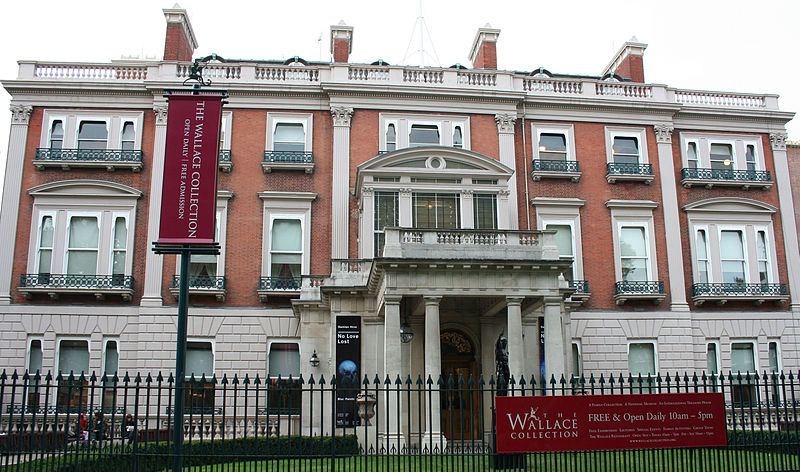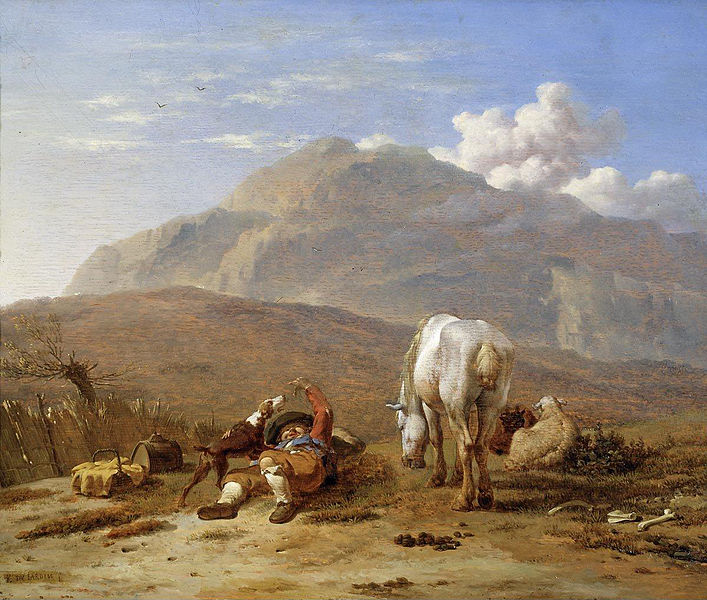Difference between revisions of "The Wallace Collection"
From Londonhua WIKI
Mthatfalvi (talk | contribs) |
Mthatfalvi (talk | contribs) |
||
| Line 2: | Line 2: | ||
|title = The Wallace Collection | |title = The Wallace Collection | ||
|bodystyle = width:25em | |bodystyle = width:25em | ||
| − | |image = [[File: | + | |image = [[File:Manchester House, home of the Wallace Collectiion.jpg|x450px|alt=Article Image]] |
| + | |caption =Hertford House | ||
}} | }} | ||
Revision as of 12:27, 30 May 2017
 Hertford House |
Contents
Overview
The Wallace Collection is a free to the public art collection that is houes in the once home of the Seymour family. It is located in Manchester Square, in the City of Westminster and is split into six different departments determined by type. The collection started between 1760 and 1880 by the first four Marquesses of Hertford and Sir Richard Wallace, the illegitimate son of the 4th Marquess. In 1897, the private collections were then donated to the nation by Richard Wallace's widow after her death to be a public collection.
Background
Inside The Wallace Collection, one can find works of many different types such as Ceramics and Glass, or Arms and Armor. There are 25 different galleries where one can wooed and impressed by 18th century French paintings and such. The collection is displayed in the private home of the late Wallace's.
Floor 1
Billiard Room
text here
Oriental Armoury
The collection of the Oriental Arms was acquired mostly by the 4th Marquess of Hertford in Paris prior to his death in 1870 and was chosen by the museum for the relics fine craftsmanship and exotic, Eastern opulence and beauty. Most of the weapons in the exhibit are Indian, Persian and Turkish from the 15th to 19th century while the armour is mostly from Indo-Persia in the 18th and 19th century. These objects were collected since they were highly sought after back in the Parisian society times and today the collection is widely recognized for being one of the largest and finest collections in the UK.
Unlike medieval arms and weaponry, oriental has more colour and more embellishments. The arms used animal tusks and bones like ivory and buffalo horn and were usually silver gilded. The art was detailed and full of bright vibrant colours like pinks, blues and yellows. Many items were gold encrusted with jewels such as vases and tea pots.
European Armory I
text here
European Armory II
Field Armor and Field Armor of Otto Heinrich, Count Palatine of the Rhine
The field armor was made in 1480 and in the 19th century. It would not be used in it current form because many of the parts were made or modified in the 19th century. The backplate, left counter, and both rebraces are in their original state. The leg armor, lower arm guards, and helmet where modified in the 19th century and the breastplate, pauldrons and gauntlets were made in the 19th century. It is in the German Gothic style and seem to have come from Castle of Hohenaschau in the Tyrol, home of the von Freyberg family. The man's armor Weights 27.161 kg, the horse's armor Weights 30.07 kg, and the mail Weights 10.17 kg. This style was a relatively light and comfortable kind of armor because the kind of steel used allowed to to be made with thin plates.
Otto Heinrich was a powerful German war-leader. The armor comes from a few different sets, which is made apparent by the fact that the designs of the pauldrons and the curass have the same patterns of birds and infants while the rest of the set contains foliage and flowers. The black section was deliberately left rough when it was made to associate it with battle hardened soldiers and the gold sections marks the armor as belonging to a noble man who's armor would be a work of art as well as functional.
European Armory III
text here
Smoking Room
text here
16th Century Gallery
text here
Front State Room
text here
Back State Room
text here
Dining Room
text here
Floor 2
Landing
text here
Boudior
text here
West Gallery I
text here
West Gallery II
text here
West Gallery III
text here
Great Gallery
text here
East Gallery I
text here
East Gallery II
text here
East Gallery III
This gallery contains masterpieces by the Artists Van de Velde, Nicolaes Berchem, Karel du Jardin and Philips Wouwermans. The paintings pictured below are pieces from the gallery.
East Drawing Room
text here
Large Drawing Room
text here
Small Drawing Room
text here
Oval Drawing Room
text here
Study
text here
Cabinet
text here
Basement
The Ritblat Conservation Gallery
text here
Porphyry Court
text here
References
If appropriate, add a references section
External Links
If appropriate, add an external links section
Image Gallery
If appropriate, add an image gallery

